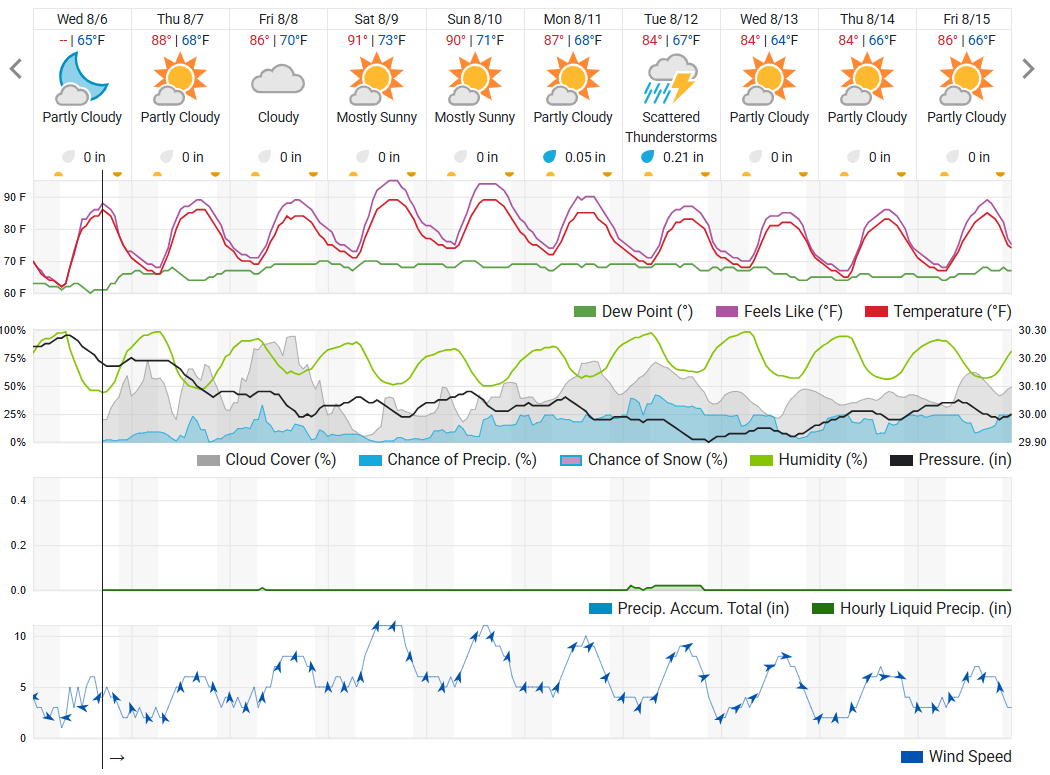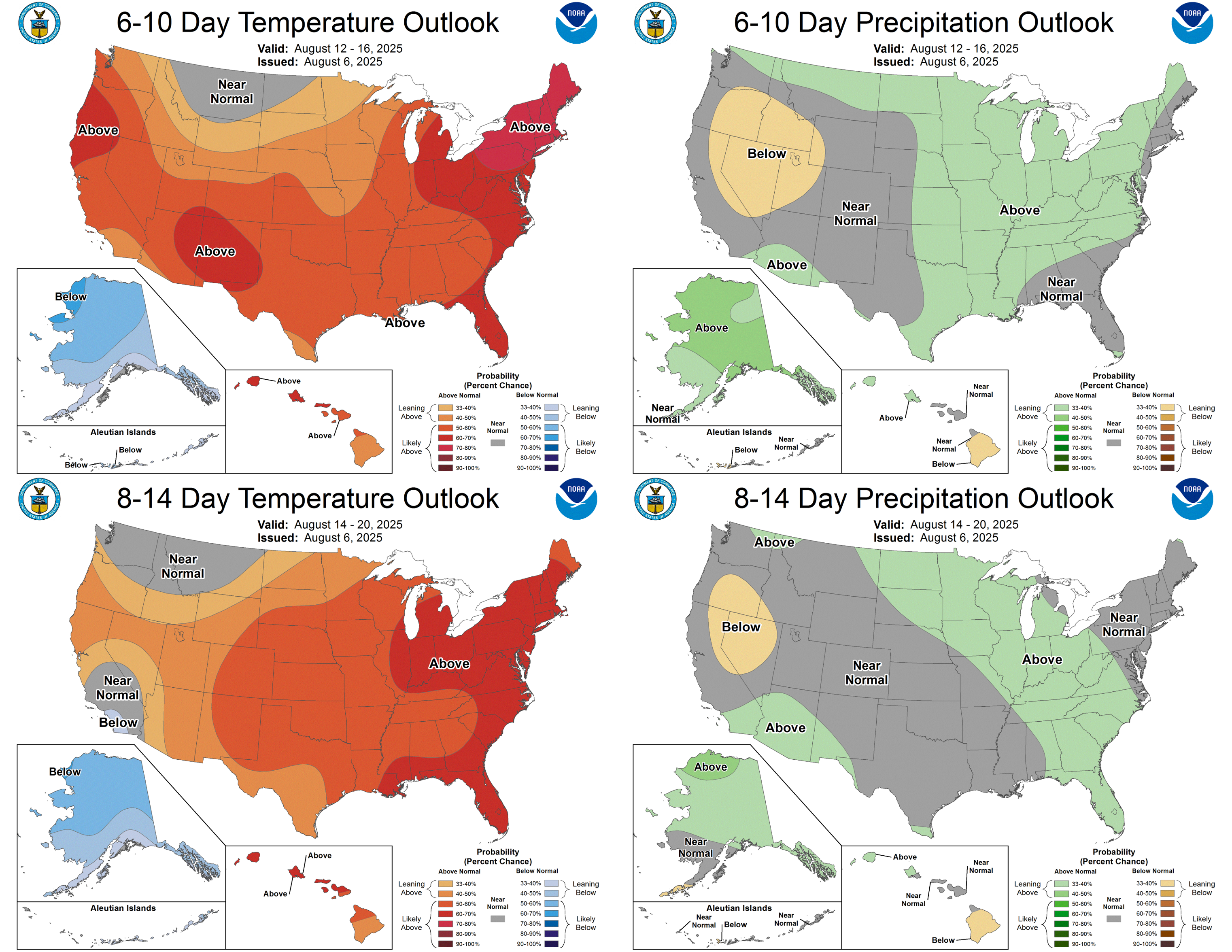By Nicolle Ritchie and Angie Gradiz
Weather
Although we didn’t receive any precipitation over the past week, the cooler temperatures over the weekend, especially at night, brought some relief to crops and producers. Temperatures began to climb again, however, and by this weekend they are expected to reach the 90s. Storms will bring a chance for precipitation early next week.


Crops and pests
Soybeans are in early pod production to early seed fill stages. Most fields are approaching growth stage R5. R5 is when the seed of a pod on the fourth node down on the main stem is 1/8” long. R5 lasts for several weeks as the seed slowly fills the pod cavity. Symptoms of white mold infection will start to be visible soon.
Corn is at ear development stages. By now, most fields have finished pollinating. Seed corn detasseling continued in some fields while others completed pollination, and male row destruction began. At R2, kernels are white and filled with clear liquid. Poor pollination starts to become visually distinguishable. Stress from high temperatures and especially from insufficient soil moisture can greatly impact pollination. Cloudy, drizzly weather can also reduce pollen shed and result in uneven pollination. R3 is the milk stage, at which point the kernels are mostly yellow and filled with milky white liquid.
Tar spot is present in most of the counties in southwest Michigan. However, confirmation in the county does not mean it is present in your fields, so continue to scout and respond appropriately. The Crop Protection Network Tar Spot of Corn Map contains a helpful table for determining if a tar spot fungicide application is beneficial at various crop stages. When scouting, pay special attention to wet areas of the field or field edges along tree lines that would have prolonged leaf wetness
Western bean cutworm moth flights have been low, with peak flight occurring the week of July 14-21. Corn that is freshly tasseled or close to tasseling is most attractive to western bean cutworm moths. At this point in the season, most fields are out of the window of concern for western bean cutworm.
Source : msu.edu